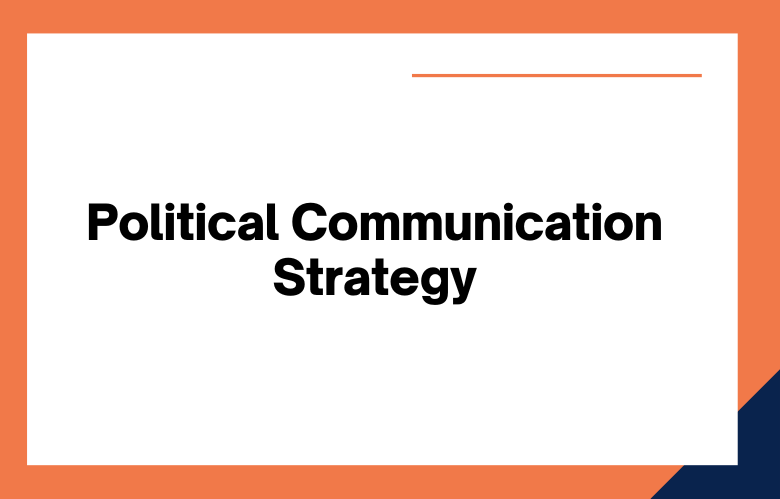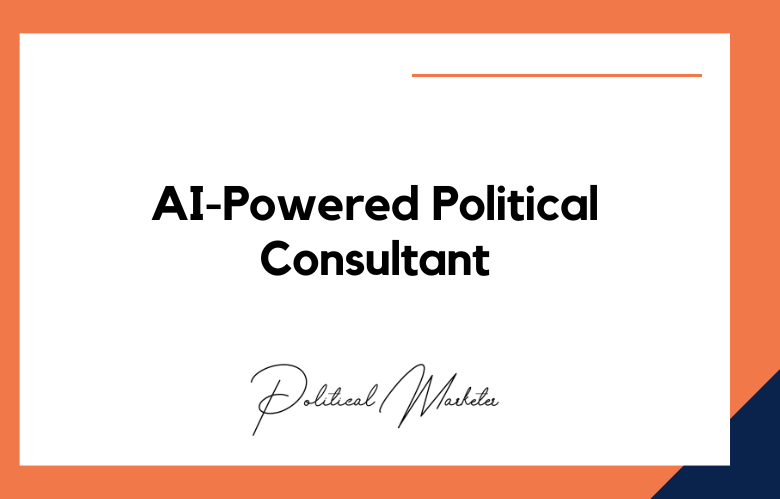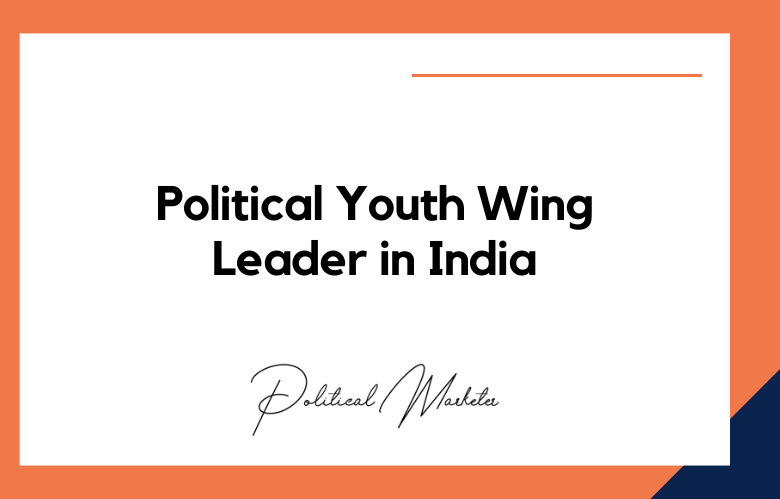In a political campaign, it is essential to have an effective communication strategy. Properly communicating your message to the public is crucial to success. To ensure that your communication strategy is effective and successful, there are specific guidelines you should follow. Let’s look at some critical points of a political communication strategy.
A Political Campaigner’s guide to Political Communication strategy
Be Clear with Your Message
The most important part of your message should be clear and concise. You want voters to understand what you are saying without deciphering it. Make sure your message stands out from other campaigns and resonates with people. Be sure to highlight the main issues you are trying to address and why they are essential for voters to know about.
Make Connections
To ensure that your message sticks with voters, you should make connections between yourself and them. Show how the issues you are discussing affect them directly or how they can benefit from the policy changes you are proposing. It will help create a sense of urgency in people and make them more likely to pay attention to your words.
Be Authentic
People want authenticity when they hear messages from politicians or candidates running for office. They want someone who will speak honestly and openly about the issues they care about instead of giving canned answers or evasive responses. You don’t need to be perfect; show people you genuinely care about their interests and concerns by being honest.
Developing Your Message
Developing a clear and concise message is the first step in any political campaign communication strategy. It needs to target the specific demographic you are trying to reach and be relevant to current events. It should also be brief enough that it can easily remember by anyone who hears it. Developing an effective slogan or tagline can help with this – something that sums up your message in just a few words.
Choosing the Right Channels
Once you have developed your message, it’s time to decide which channels you will use to get it out there. Social media like Twitter, Facebook, and Instagram are excellent for reaching a more comprehensive number of people quickly and cost-effectively.
However, email and print media are viable options for more direct communication with potential voters. It would help if you also considered attending local events or organizing meet-ups to interact directly with potential supporters.
Analyzing Your Results
It’s crucial to analyze the results of your communications efforts to ensure they have the desired effect. It can do through surveys or focus groups; however, if you don’t have access to these resources, then online analytics tools such as Google Analytics can also provide valuable insights into how many people engage with your content and what kind of impact it is having on them.
Know Your Audience
The most crucial step in crafting any communication strategy is understanding who you are trying to reach and what they care about. Knowing your target audience allows you to tailor your messaging to resonate with them. For example, if you are running for state office, you may target younger voters by emphasizing issues like education reform or health care access.
On the other hand, older voters may be swayed more by promises of economic growth or infrastructure improvements. If you can pinpoint your target demographic and tailor your messaging accordingly, you will have a great chance of success at the polls.
Choose Your Channels Carefully
Once you know who you are targeting with your message, it’s time to decide how best to reach them. Social media is an effective tool for engaging with potential voters—especially younger ones—but other channels should not be ignored.
Traditional media like television, radio, and print still carry weight among many audiences; reaching out to local media outlets can help get your message out even further. Don’t underestimate the power of direct mail either; postcards sent directly to voter households can impact election day turnout if done correctly.
Develop Your Messaging
Now that you understand who you are trying to reach and how best to get them, it’s time to craft your messaging. Knowing your audience becomes critical; developing effective messaging should come more naturally if you understand what topics they care about and how they perceive specific issues.
Consider brainstorming different messages that resonate with each demographic group; remember that one size does not fit all when developing effective communication strategies!
Research Your Audience
Understanding your target audience and what they want to hear from your campaign is essential. Make sure you research your target audience thoroughly so you can craft messaging that speaks directly to their needs and interests. Studying your audience also helps you understand which platforms they will be most receptive to, such as social media, television, radio, or print media. It is essential to tailor your message for each platform to resonate with the most likely to see it.
Identify Your Message
Your political campaign needs a clear, concise message that will differentiate it from other candidates running for office. Identifying this message will help focus your communications efforts and ensure that every piece of content you create supports this overall goal. Ensure this message resonates with your target audience and appeals to their values and beliefs.
Create Engaging Content
Once you have identified your message and researched your target audience, it’s time to start creating content! It could include videos, graphics, articles, podcasts, or anything else to help compellingly get the word out about your campaign. Be sure the content you create reflects the values of your campaign and appeals to its intended audience.
Conclusion
Political communication strategies are essential for any political campaign looking for success this election season.
By following these guidelines, you can craft a compelling message that resonates with voters, makes meaningful connections between yourself and them, and emphasizes authenticity for people to trust you as a candidate or leader seeking their support.
Use these tips to craft an effective political communication strategy this election season!
Crafting a winning political communication strategy is essential if you aim to have success with your campaigns.
The proper steps need to be taken in the early stages so that you and your messaging are prepared for when it’s time to reach out and expand your voice.
An effective political communication strategy can be accomplished through proper messaging, tailored plans, and modern technology.
It is essential to think through all components to ensure a successful outcome.
When it comes time to craft a winning political communication plan, contact political campaign consulting experts to help you prepare the perfect combination of ideas that get results. You will create a plan of action to bring lasting success to your political party or platform.
Call: +91 9848321284
Email: [email protected]
Crafting a Winning Political Communication Strategy: FAQs
What Is A Political Communication Strategy?
It is a structured plan that outlines how a political figure or party will convey their messages, values, and policies to the public across various channels.
Why Is Strategic Communication Crucial In Politics?
Effective communication helps build trust, shape public perception, align messaging, and influence voter behavior during campaigns and governance.
What Are The Core Elements Of A Political Communication Strategy?
Core elements include messaging frameworks, media planning, spokesperson selection, narrative building, crisis response, and audience segmentation.
How Do You Define A Political Narrative?
A political narrative is a compelling story or message thread that encapsulates a candidate’s identity, goals, vision, and values in a relatable manner.
Who Should Be The Spokesperson For A Campaign?
Ideally, a well-prepared candidate or a trusted media-trained team member who aligns with the campaign tone, messaging, and public expectations.
What Role Do Values And Ideology Play In Communication?
They are the backbone of campaign messaging, ensuring consistency and emotional resonance with target voter groups.
How Should Political Messaging Be Structured?
Messaging should follow a hierarchy—vision first, then mission, followed by policy, and issue-based stances, all framed around public interest.
What Is Message Discipline And Why Does It Matter?
Message discipline is repeating a core message consistently across platforms and spokespersons to avoid confusion and contradiction.
How Can Digital Media Be Leveraged For Political Communication?
Through social media, email, SMS, and websites, tailoring messages to each platform’s format and audience behavior.
What Is The Role Of Data In Communication Strategy?
Data informs what voters care about, which messages resonate, where to communicate, and how to personalize outreach for better impact.
How Should A Campaign Handle Communication During A Crisis?
Activating a pre-defined crisis communication plan, issuing transparent statements, and controlling the narrative swiftly and authentically.
How Does Media Training Support Communication Strategy?
It prepares spokespeople for interviews, press conferences, debates, and unexpected questions by aligning responses with campaign priorities.
What Makes A Political Speech Effective?
Powerful speeches are defined by clarity, emotion, storytelling, issue framing, voter connection, and a memorable closing call to action.
What Are Communication Touchpoints In A Campaign?
They include public rallies, media interviews, digital posts, emails, volunteer outreach, and policy documents—each needing message consistency.
How Often Should The Communication Strategy Be Updated?
Regularly, based on new data insights, voter feedback, media reactions, and evolving political issues or crises.
What Is The Role Of Visual Communication In Politics?
Visuals such as colors, fonts, logos, and videos amplify the message, build identity, and create stronger emotional and cognitive recall.
Can A Communication Strategy Be Localized?
Tailoring messaging by region, language, culture, and local issues improves relatability and voter response.
How Do You Ensure Consistency Across Multiple Channels?
Developing a messaging architecture and using central communication briefs shared with all teams and content creators.
What Is The Difference Between Campaign Communication And Governance Communication?
Campaign communication focuses on persuasion and votes, while governance communication emphasizes transparency, accountability, and public service.
How Can Feedback Be Incorporated Into Communication Strategy?
Monitor public sentiment, media coverage, and social media engagement, then adjust tone, focus, and channels accordingly.











